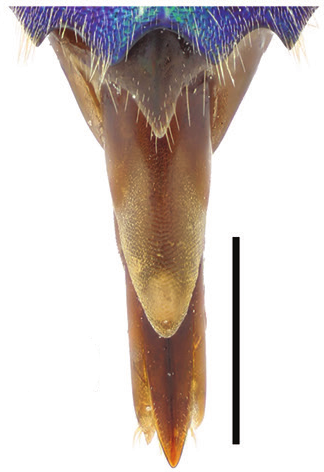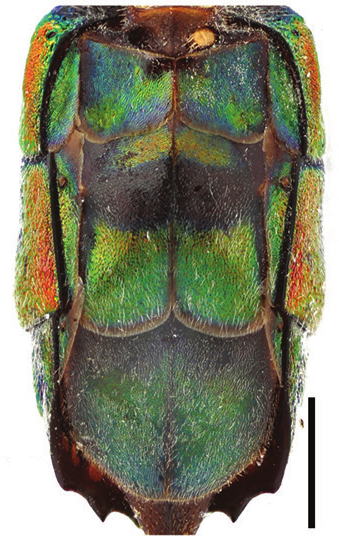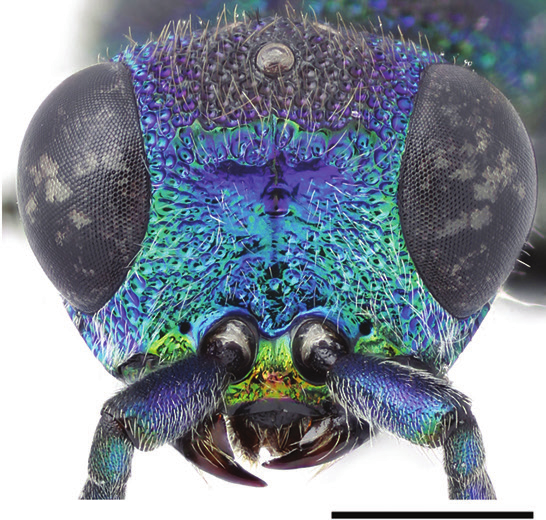Chrysis zetterstedti
- Innhold
- Diagnosis
- Distribution
- Biology
- Remarks
Diagnosis
Figure 90
Ovipositor, dorsal view: C. zetterstedti ♀. Scale 1 mm.
Figure 113
Metasoma, ventral view: C. zetterstedti ♀. Scale 1 mm.
Figure 135
Genital capsule, dorsal view: C. zetterstedti ♂. Scale 0.5 mm.
Figure 152
Head, frontal view (arrow indicating frontal carina): C. zetterstedti ♀. Scale 1 mm.
Length 6–9 mm.
The species resembles C. equestris, but differs from it by the following characters: the black spots of S2 are broader, extending to the lateral and anterior margins of the sternite (Fig. 113), T5 of the female is narrower and does not have a longitudinal medial groove (Fig. 90), the head is narrower (the shortest distance between the compound eyes is shorter or as long as the diameter of an eye) (Fig. 152), the gonostyle is more elongated, as long as the cuspis, the cuspis is apically straight (not curved) (Fig. 135), and the propodeal tooth is weakly lobate ventrally (not convex or straight).
Distribution
Estonia, Latvia, Lithuania, Sweden. Rare.
Trans-Palearctic: from North Europe to Siberia. Records from the East Palearctic Region refer to C. fasciata daphne Smith, 1874 (Rosa et al. 2014).
Biology
Habitat: forest margins and clearings with sun-exposed dead tree trunks and stumps (e.g. Quercus).
Flight period: probably similar to that of C. equestris, most specimens have been collected in July.
Host: unknown, possibly Euodynerus notatus (Jurine) (N. Johansson pers. obs.).
Remarks
Several authors have considered C. zetterstedti to be either a synonym (e.g. Trautmann 1927, Kimsey and Bohart 1991) or a subspecies (Linsenmaier 1959, 1997, Rosa and Soon 2012) of C. fasciata. However, molecular and morphological studies have shown that C. zetterstedti most likely represents a valid species (Paukkunen et al. 2014). The occurrence of C. zetterstedti in central and southern Europe is still uncertain.



